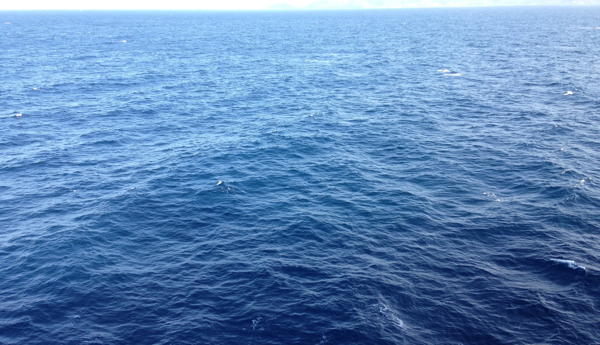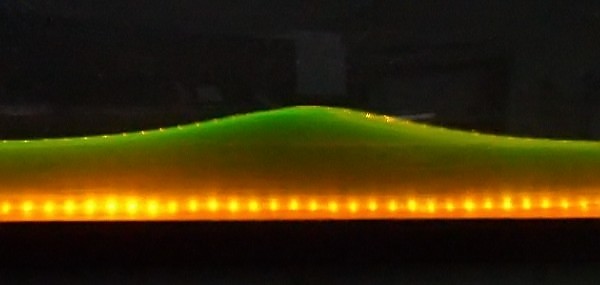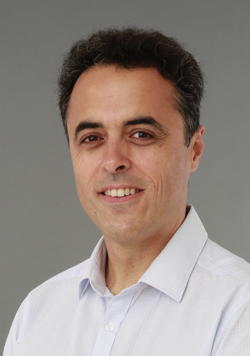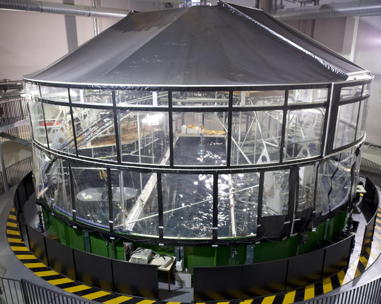Wave turbulence

What is Wave Turbulence ?
Wave turbulence can be generically described as a random system made of a large number of nonlinear waves that requires naturally a statistically description. Because of nonlinearity the dynamics of the waves are coupled. This description is very general and can involve very different states.
A first case is that of waves that can exchange energy. This is the case of weak turbulence and for example for water surface waves propagating 2D as shown in the image above. One can see the coexistence of waves of various wavelengths propagating in many directions. This sort of wave turbulence can be encountered as well in many physical examples in particular in geophysics, astrophysics or oceanography. This includes waves at the surface of water (in the gravity range at large scales or the capillary range at small scales) as can be seen at the surface of the ocean. These waves have a major impact in transportation but also in the coupling between the atmosphere and the ocean through exchange of momentum, energy, mass. Other fluid waves are inertial waves or internal waves that propagate in the interior of fluids that are subjected to the action of the Coriolis force in rotating fluids or if the fluid is stratified i.e. if the density of the fluid is changing vertically. This is again the case in the ocean. The ocean (and the atmosphere too) is subjected to the rotation of the Earth and stratified, the water at the bottom being denser than that at the top (mostly due to temperature variation but also to salinity variations). Because of these two effects waves can propagate in 3D in the interior of the ocean. These waves can transport energy over long distances and their nonlinear interaction contributes to kinetic and potential energy dissipation through viscous dissipation and mixing of the salt or the temperature. These effects are extremely important in the global dynamics of the oceans, especially in the context of global modeling for climate studies. These features have to be accurately parameterized in numerical simulations of long term ocean dynamics for weather forecast or climate predictions. This parameterization implies an accurate understanding of wave turbulence in real conditions that is presently quite limited. Internal waves are present also in the liquid cores of planets or in stars that have usually both rotation and stratification. Wave turbulence can also be observed in magnetized plasmas like solar winds in astrophysics or like ITER for energy production through nuclear fusion. In the later case turbulence increase transport and may degrade the confinement of the plasma that is required to initiate the fusion.

Soliton (Christophe.Finot et Kamal HAMMANI via Wikimedia Commons)
A second very different example is that of integrable turbulence which involves nonlinear waves that interact elastically and thus that do not exchange energy. This is the case of the soliton gas. A soliton is a nonlinear wave that propagates without changing its shape (picture above). It can be encountered in shallow water as in the historical observation of John Scott Russel in a Scotland in 1833. Two solitons interact elastically with only small delays in the propagation but no change of shape and size. Somehow they behave as particles. When a large number of such solitons coexist, one talks of a soliton gas. Such states can be observed for specific cases of waves that follow integrable wave equations such as the Korteweg - de Vries equation for water waves on shallow water (in 1D). It can be observed in shallow areas near the shore. Similar states can also be observed for the propagation of light in optical fibers. In such a case the wave equation is the Nonlinear Schrödinger Equation. In that case, the presence of integrable turbulence will degrade the rate at which data can be transfer with optical fibers.
These two frameworks are extremely different from a physical point of view. My project is concerned mainly with Weak Turbulence but we did also experiments of a soliton gaz.
What is Weak Turbulence ?
Weak turbulence occurs for dispersive waves that can exchange energy through nonlinearity. Under the hypotheses of weak wave amplitude (weak nonlinearity) and extremely large system size, a statistical theory called Weak Turbulence Theory (WTT) was derived in the 60's. This theory predicts in particular the equations of the slow evolution of statistical quantities such a the wave Fourier spectrum. For instance variants of this equation are actually used for wave forecasting. The case that is of interest to me is that of wave turbulence that is both forced and dissipated. Dissipation can not be avoided in real life and if one wants to reach a stationary state, energy must be input so that to compensate for dissipation. In the theory, one assumes that energy is input at very large scale and dissipated at very small scales. Thus in a large range of intermediate scales, the dynamics can be considered as conservative and the nonlinear coupling among waves transfers energy from large to small scales. This is named the energy cascade. One major success of the theory is to provide analytical prediction of stationary wave spectrum, the so-called Kolmogorov-Zakharov spectra for many systems (see for instance the book by Sergey Nazarenko, Wave Turbulence, Springer, 2011)
The WATU project
The Weak
Turbulence framework is appealing but it is strongly idealized.
For instance, the physical systems are rarely extremely large so
that the effect of finite size can not be discarded at all
scales. Dissipation is often present at all scales. If it is
small enough it can allow the development of turbulence but the
impact of dissipation may not be negligible. It may be also the
case for the forcing. Furthermore, the nonlinearity may not be
small at all scales. These effects usually occur simultaneously
and question the relevance of the WTT to describe accurately
wave systems in real conditions. The project is aimed at
analyzing the impact of these issues in experiments. It aims to
tackle the following questions:
-
1. Is it (always) possible to observe weak turbulence in real systems ?
-
-what is the impact of the finite size of the system ? What is the effect of confinement ?
-
2. What information can one get beyond the Kolmogorov-Zakharov spectrum (which is rarely observed in experiments) ?
-
- detailed investigation of the nonlinear coupling between waves
-
- what about non stationary regimes ?
-
3. What if turbulence is not weak ?
-
- what is the impact of coherent structures that are usually observed in these cases ?
-
4. What about non dispersive waves ?
-
- waves that are not dispersive (i.e. that propagate at the same speed) are very specific. What will happen when we experimentally decrease the dispersion of the waves: shocks, solitons, something else ?
-
5. Inverse cascades ?
-
- the theory predicts also inverse cascades notably for surface gravity waves. Is it possible to observe an inverse cascade experimentally ?
The experiments
In order to provide answers to these many open questions, I use a variety of physical systems in which to generate well-controlled wave turbulence. The project is mostly based on experiments but also to a lesser extent on direct numerical simulations. These experiments will be hosted in LEGI (Laboratoire des Ecoulements Géophysiques et Industriels / Laboratory of Geophysical and Industrial Flows) in Grenoble, France. The main technical goal is to develop space and time resolved measurements in all experiments so that to have access to the the full dynamics of the system. Indeed wave are characterized by the fact that they propagate. This propagation is characterized by the dispersion relation in the linear case. In order to be able to differentiate waves from other structures, a space-time measurement is required. Such a measurement will generate huge amounts of data and the processing of such data is a main concern in this project. The physical systems that will be investigated experimentally in this project are:
-
1. flexion waves in a vibrated thin elastic plate (experiment and numerical simulations)
-
2. surface gravity-capillary waves at the interface between two fluids
-
3. surface gravity waves either in 1D and 2D
-
4. inertia-gravity gravity waves in 3D (stratified and rotating turbulence)
- Click on the buttons below to obtain more details on the experiments.
See the bibliography section for links to articles resulting from this project (and others).


 Nicolas
Mordant (PI, Prof.)
Nicolas
Mordant (PI, Prof.)



